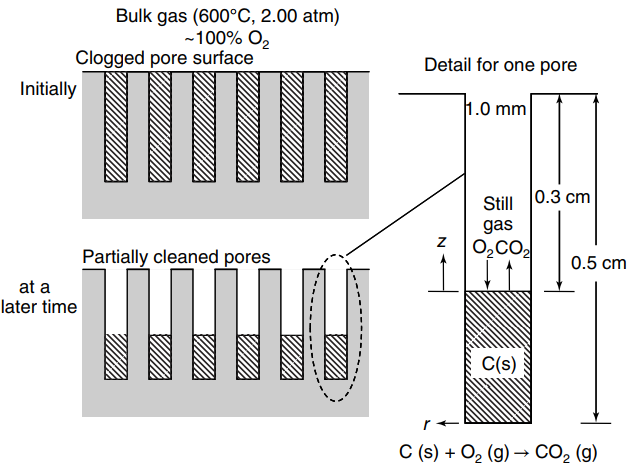A flat surface containing many parallel pores is clogged with coke from a manufacturing process, as shown
Question:
a. At some time after the oxidation process, the cleaned depth of the pore is 3.0 mm (0.3 cm) from the mouth of the pore. What is the total emissions rate of CO2 gas (WB) at this point in the process?
b. How long will the oxidation process take to reach this cleaned depth of 0.3 cm from the mouth of the pore?

Fantastic news! We've Found the answer you've been seeking!
Step by Step Answer:
Related Book For 

Fundamentals Of Momentum Heat And Mass Transfer
ISBN: 9781118947463
6th Edition
Authors: James Welty, Gregory L. Rorrer, David G. Foster
Question Posted:





